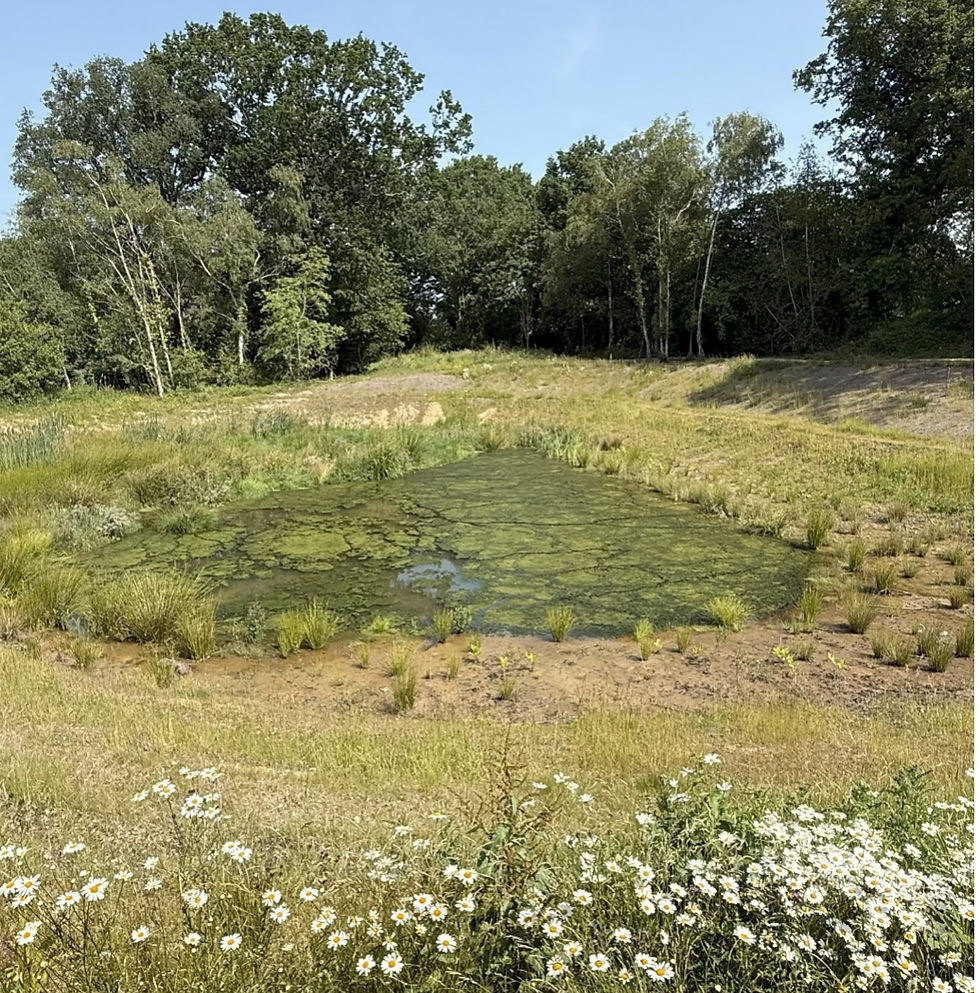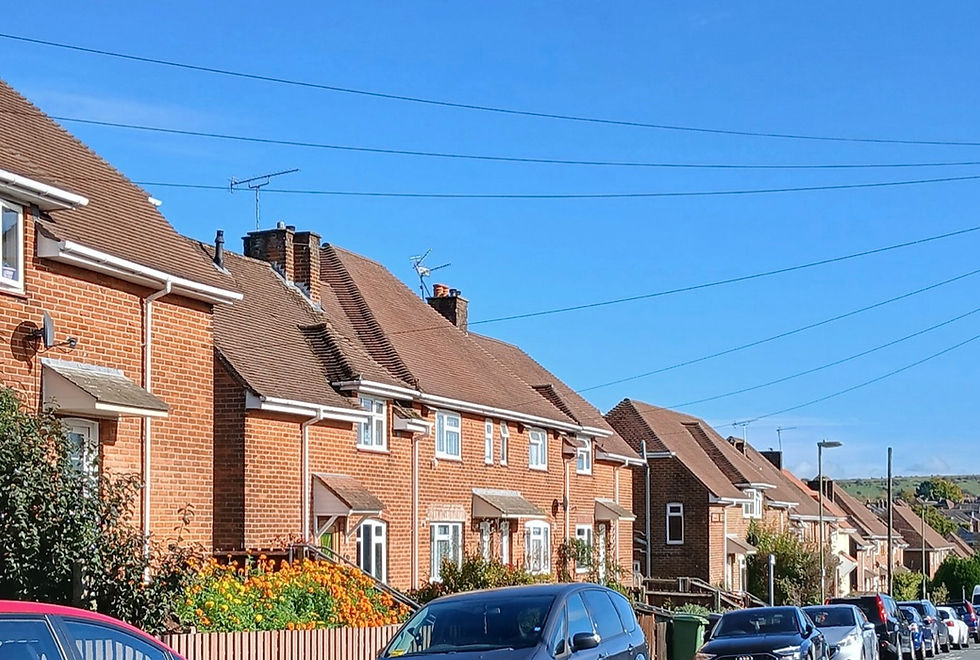North Baddesley and Mountbatten Park
- Aug 29
- 4 min read
Updated: Aug 30
In the middle of June, Roger and I paid a visit to North Baddesley, a village just south of Romsey. Here at the south-west corner of the village the estate was built in around 1980 and the houses were constructed with open eaves, ie no soffits, and with timber fascias and bargeboards. Although some properties have had uPVC fitted, this has not happened as quickly as I’d imagined it would. On our visit it was wonderful to see the wealth of urban birds, lots of House Sparrows, Starlings and House Martins too. When I asked where the latter were getting the mud from to build their nests, I was told that Morrish Homes had built an overflow pond from their new development on the other side of the road, perhaps just one of the positive benefits of BNG requirements.

House Martins have suffered greatly here in the SE of England due to the effects of climate change. They have an average lifespan of just two years and a remarkably low first year survival rate of just 14.5% according to the BTO. Drier springs and the lack of April showers means that there is less mud for them to be able to build or repair their nests in the spring. No available mud means that they will move on to wetter parts of the country. Luckily a local resident, Robin Pascal, had had some discussions with the Ashfield Estate and stressed the importance of including some mud sites around the storage pools expressly for the House Martins, and how unique it was to have so many successfully nesting in the area.Hopefully these will prove to be more reliable and less likely to dry out than the old silage pond, as would happen previously during hot springs.
On this estate there would be precisely zero House Martins if it were not for the presence of this pond with its muddy edge - and the single artificial House Martin cup on one of the houses. As we watched an adult HM enter this nest cup to feed its young nestlings, a Swift swooped around and went in to feed its young in its own nest built on the flat ply top surface! Wow, that was unexpected. And perhaps shows how we could help both species at a stroke by the installation of more artificial HM cups.

Swifts on this estate typically enter their nests at the top of the gables with some also entering where a cut brick wasn’t inserted where a purlin protrudes on the slope of the gable. See picture below taken by Robin Pascal of a Swift clinging on at its nest entrance below the purlin.


The first Swift boxes were installed here five years ago in 2020 and no birds have yet started to use the boxes. This autumn at least one call player will be installed and we’ll see how quickly the birds adapt to using the boxes. There are still quite a few Swifts nesting on the estate, though several nest sites were recently lost when another house was fitted with uPVC.

Meanwhile on the adjacent new Mountbatten Park, being developed by the Ashfield Partnership and builders Morrish Homes, Wyatt Homes and CG Fry and Son, 300 new homes demonstrate the principles expressed in their Design and Community Code. Many integral bird bricks (average of 1:1 I believe), bat bricks and insect bricks are being installed, and hedgehog highways too. This is the second of three developments following the completion of the 50+ units at Luzborough on the edge of Romsey a few years back, and a larger development at Whitenap which is in the planning stage. All will adhere to the same high community and biodiversity principles. And all done voluntarily and willingly without being mandated by the council and then simply ‘forgotten’ and not installed when it comes to the construction phase. Well done Ashfield Partnership.

The 1980 estate was just one of the places that I took a BTO scientist to show the changes that had happened in the construction industry in the last 40 years or so, and that the decline of Swifts was caused by the loss of nest sites due to these and the use of uPVC to replace or overclad the timber that was used initially when the houses were built. At Hampshire Swifts we believe that the decline of Swifts has little if anything to do with the alleged falling first-year survival rate or reduction of some groups of insects. If that were the cause it would not be so easy to turn the population around by installing so many boxes. See our last post on the changes that have taken place in Winchester since 2018. The hardest part can sometimes be getting the first birds to make that change from using their natural sites to using boxes.
And on the adjacent new estate I wonder how long it will be before Swifts start to use the new integral bird bricks that are being installed.
Tim Norriss
Hampshire Swifts




Trusted WordPress development company UK, software development company UK, and mobile app development company UK, providing end-to-end digital solutions for businesses of all sizes.
Great post about North Baddesley and Mountbatten Park—wonderful places where nature and community come together! Keeping areas like these clean requires a responsible approach to waste, and that's exactly what Affordable Waste Management https://affordablewastemanagement.co.uk/commercial-waste-services-in-manchester/ provides. It provides businesses in Manchester with professional waste management services, including the collection, recycling, and disposal of commercial waste. Thanks to modern working methods and attention to the environment, the company helps to keep things clean and tidy, contributing to a more sustainable future for cities and natural areas.